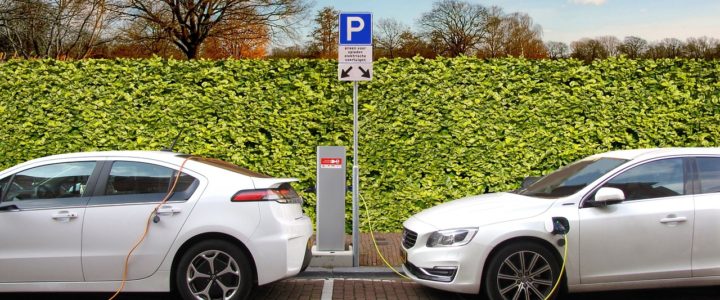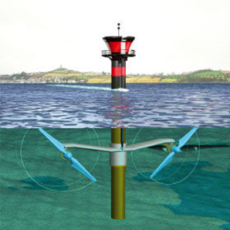
One of the easiest ways to cut down on your carbon footprint is to drive your vehicle less and use shared or public transport, a bicycle, or car pool. But what if driving is your only option? Should you get an EV? How sustainable are they, anyway? We’ll compare the sustainability of electric and internal combustion engine, or ICE, vehicles to give you a definitive answer. And this isn’t just an EV sales pitch – get comfy for some ugly truths, from both sides of the fence.
Global GHG emissions are troublingly high and continue to climb. The IPCC AR6 reported that in 2019 direct emissions from the transportation industry accounted for 23% of global energy related emissions. 70% of that 8.7Gt of CO2e was from road vehicles. 1%, 11% and 12% came from rail, shipping and aviation respectively. It’s clear then, that emissions reductions from road transportation is an absolute necessity. Proponents of the fossil fuel industry don’t think EVs are the answer. However, whether they think any solution is required is, of course, unlikely.
While most experts in the field agree that electric vehicles are definitely cleaner and more environmentally responsible than those powered by fossil fuels, some of the arguments from those opposing EVs are genuinely valid.

Right off the bat, manufacturing electric vehicles is more emissions intensive than making those which run on fossil fuels. Volvo recently assessed the manufacturing emissions of their XC40 compared to the fully electric C40. Despite being in the same factory on the same assembly line and with many shared components, the EV had 70% more emissions. It’s been previously reported by the Union of Concerned Scientists, that manufacturing emissions are about 15% higher in midsize EVs and up to 68% for larger, longer range EVs, compared with equivalent gasoline vehicles. So as stark as the figure sounds from Volvo, it seems accurate. But why? The majority of this increase is due to the batteries. The exotic materials require mining and refining. Lithium, cobalt, and nickel are essential components of lithium-ion batteries, and their extraction can have adverse environmental and social impacts. Mining operations must be managed responsibly to mitigate these issues, protect ecosystems and local communities, and prevent child labor.
Due to the increasing demand for EV batteries, it’s estimated that lithium production will need to quadruple, and cobalt will need to double. In order to address some of the concerns around the access to said minerals, organizations have been formed, like the Global Battery Alliance, the Responsible Cobalt Initiative and the Responsible Minerals Initiative. They’ve deployed various protocols, such as the Global Battery Alliance’s 10 Guiding Principles for a sustainable battery supply chain. This might not be enough to quiet the anti-EV cohort. And it can’t be disputed that the mining of these minerals is fraught. BUT….this might be a good time to discuss the catalytic converters in combustion engine vehicles. These devices, sometimes referred to as cats or cat-cons, are designed to reduce the voluminous wafts of toxic pollutants which spew from a vehicle’s exhaust pipe. And they are extremely effective. They can decrease hydrocarbon emissions by almost 87%, carbon monoxide by 85%, and nitrous oxide by 62% during the expected life of a vehicle. These reductions are obviously important. So unsurprisingly, they’re a legal requirement for vehicles in most countries, including the US, England, India, Australia, Japan and China. Why is this relevant to the conversation around EV batteries requiring precious minerals? Cat-cons are made with platinum, palladium, rhodium, iron, manganese, or even sometimes nickel. Not the kind of stuff we find at the corner store. For obvious reasons, this usually doesn’t come up when EV naysayers discuss batteries, but it’s good to know.
A short time ago we discussed some of the more recent advances around EV batteries. There are genuinely exciting moves in this sector, including the possibility of removing lithium altogether. Remembering the projection of lithium demand quadrupling to meet market supply, this is particularly good news! There are also heavily financed teams working to increase both the battery lifespan and driving range. And on the subject of lifespan, another hugely positive step is the amount of recycling and reuse options available for EV batteries. The materials and components can be removed and used elsewhere, or the battery in its entirety can be used in a battery storage facility. Meaning they are less likely to wind up in landfill. In fact, a 2023 sustainability report from the SMMT (Society of Motor Manufacturers and Traders) in the UK found that overall waste sent to landfill from the automotive industry has dropped by 98% since 1999, and 35.3% since 2022 – which is a fantastic effort!
To recap so far – the production of an EV and its battery produces more GHG emissions than production of an ICE vehicle. But here’s where it could get good!

To assess how efficient the vehicle is, a miles per gallon of gasoline equivalent is used for an EV, to compare with the MPG of gasoline cars. This MPGe is calculated by using an established energy standard of 115,000 BTUs (British Thermal Units) per gallon of gasoline. Meaning, if you set fire to 1 gallon of gasoline you’d produce 115,000 BTUs. To create that same amount of heat you’d need 33.7kWh of electricity. Therefore 1 gallon of gasoline is equivalent to 33.7 kWh of electricity. For context, the average American household uses approximately 30kWh of electricity per day.
2023 model EVs are getting between 73 and 140 MPGe for the Audi e-tron S and Hyundai Ioniq-6 Long Range, respectively. 2023 model ICE vehicles are getting between 14 and 57 MPG, for the Jeep Wrangler and Toyota Prius respectively. Those numbers are pretty clear: EVs are superior in terms of efficiency. Something to consider with this math is that the MPGe varies from state to state or country to country. It depends on factors such as the type of power plant that supplies the energy, the efficiency of the electricity network and the time of day the car is being charged. If you have rooftop solar or use a municipal charger which uses renewable energy, you come out even further in front!

Typically, here’s the part where the EV doubters talk about driving range. And that EVs are therefore not a realistic option. Are you ready for some shocking statistics? More than HALF the car trips in the United States in 2021 were less than 2 miles. And only 2% of all trips covered more than 50 miles. In that year, the average EV driving range was 234 miles.
Next, the conversation will turn to the lack of charging infrastructure. And there is no doubt that this has to improve, all over the globe (well, except maybe China, which already has more than 1.2 million publicly accessible charging docks). The United States has approximately 108,000 public charging stations. Interestingly, that’s more than the number of gas stations. Currently, there are 21 EVs per charging station, but 2,500 ICE vehicles per gas station. There’s close to half a million EV charging points in the EU, and 37,000 in England. Access to EV charging certainly needs to improve, but the situation isn’t as bad as the doubters would have you believe.
So with higher manufacturing emissions, but MUCH lower operational emissions, lifetime emissions of an EV is clearly less than that of an ICE vehicle. The UN has calculated that if we can achieve 60% share of EV and Hybrid vehicles on the road, more than 60 billion tons of CO2e would be saved between now and 2050. This number will go up further with rapid advancements in battery tech, as production emissions reduce. And with increasingly accessible renewable energy, the operational emissions will also drop. Oh, and did we mention renewable energy prices are dropping further and further? This is all very positive news.
The biggest cloud which could rain on the EV parade is the lack of transparency over the minerals, the risk to human rights and the environment, in the mining locations. To be clear – there is still work to be done to get EVs to reach their full, positive potential. But rest assured, that work is happening! And do we think employing strategies to mine reusable minerals safely and ethically is better than extracting and burning oil? Yes. Yes, we do. So with a little extra time doing some homework, switching to an EV is a planet positive move.



